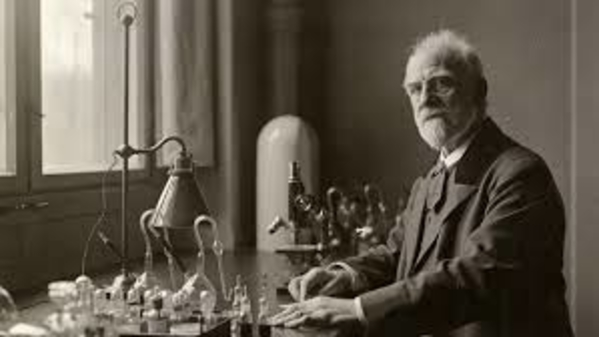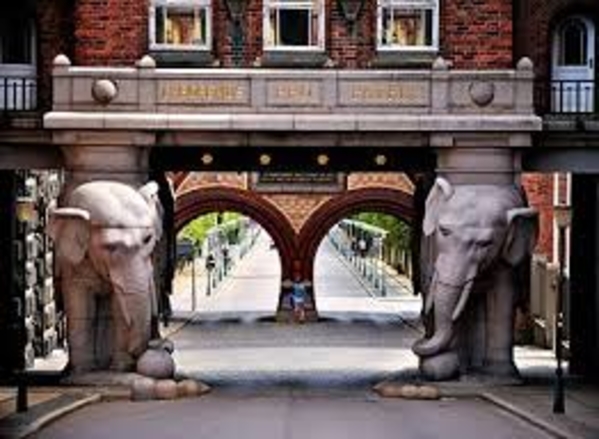To lager or not to lager: it's the new brewing conundrum in Denmark
Added: Monday, September 4th 2017

A senior brewer at Carlsberg bellowed at a group of visiting beer writers: “We have taken the lagering out of lager!” The room in the Copenhagen brewery went quiet and the brewer, aware of the enormity of what he had said, added: “Please don’t name me – I could lose my job.”
Not wishing to add to the number of unemployed in Denmark, I will respect his wish and allow him to remain anonymous. But his remark was both potent and timely, and poses the question: What is meant by lager in the 21st century?
Lager or lagerung is a German word meaning “storage”. Traditionally, beers made by cold or bottom fermentation have been stored in brewery lager kellers for several months. During that period, with the beer kept at a temperature close to freezing, a slow secondary fermentation takes place while yeast and protein collect at the base of the vessel.
This is still the system used by traditional lager brewers in Europe. The most notable example is Budweiser Budvar in the Czech Republic, where the beer is aged for 90 days.
It’s a different story with global brewers such as Carlsberg. Research and development have redefined the yeast cultures used to make lager and the result is beers brewed almost as fast as ale.
At Heineken’s Zwyiec brewery in Poland, in a brewing hall the size of Wembley Stadium with the processes carried out by two men in front of computer consoles, I asked the question: “How long do you lager the beer?”
My hosts looked puzzled as though the term was new to them. They went into a huddle then returned to tell me that the entire production cycle – mashing, boiling and fermentation – was 21 days.
At Carlsberg’s Finnish subsidiary Synebrychoff I was given the same message of 21 days and that seems to be the standard time for all the big lager brands produced by global brewers.
It can even be shorter. Anheuser-Busch, owners of American Budweiser, told me 21 days “but it can be shortened at times of high demand.”
It was fitting that the declaration that big brands are no longer properly lagered came from a brewer at Carlsberg for it was the painstaking scientific study of yeast at the Danish brewery in the 19th century that enabled modern lager brewing to develop. As a result of that work, lager went on to become the dominant beer style throughout the world.
Lagering beer is an ancient process. Benedictine monks at the monastery of Weihenstephan – Holy Stephen – at Freising near Munich built a brewery in 1040 and it’s known as the Ältester Brauerei der Welt – the oldest brewery in the world.(This date is disputed: see entry for Weihenstephan in German Wikipedia.) The monastery was built on a hill and the monks stored their beer in icy caves. Brewing was empirical but the monks noticed that the cold temperature kept the beer free from infection from wild yeasts while their own yeast slowly sank to the base of the vessel during storage.
Other monasteries followed the example. The best known is the Paulaner brewery in Munich, opened by Pauline monks in 1634. They also stored their beer in caves and went on to become world famous for their strong Salvator, a 7.5% beer that, following the Reformation, became a commercial style known as Doppelbock.
In Munich in the 19th century, Gabriel Sedlmayr the Younger, owner of the Spaten brewery, created great interest throughout Europe and Scandinavia when he developed brewing of lager beer on a bigger commercial scale, with the beer aged in giant oak vessels in cellars deep below the brewery and kept cold with ice.
Spaten’s product was dubbed Bavarian beer and it attracted the attention of Jacob Christian Jacobsen, owner of the Carlsberg brewery in Copenhagen. He brewed “white” or wheat beer brewed with top fermenting ale yeast. Jacobsen was dissatisfied with the end product and determined to see the new Bavarian beer at close quarters.
He made the long, arduous 600-mile journey by stage coach to Munich where he spent some time studying brewing technique with Sedlmayr. He returned home with a sample of Spaten yeast. It has gone down in brewing folk lore that Jacobsen kept the yeast cool under his stovepipe hat and doused it with cold water at every stop on the road to Copenhagen.

Back home, he brewed a small batch of beer using Spaten yeast, using his mother’s wash tub. He was satisfied with the result and converted his brewery to Bavarian or bottom-fermenting beer. By the 1870s, Jacobsen was the biggest brewer in Denmark and an extremely wealthy man.
But disaster struck the world of lager brewing in the 1880s. As the industrial revolution transformed societies, small towns became large industrial cities. Thirsty workers demanded refreshing beer but were thwarted by brewers who couldn’t produce beer during the summer as the heat brought with it infection from wild, air-borne yeasts. Sour beer became as serious a problem for brewers as the phylloxera disease was for wine makers.
Fortunately Jacobsen employed a brilliant scientist, Emil Hansen. He studied the work of Pasteur and set to work to isolate a pure, single strain of yeast. His research showed that the yeast used at Carlsberg was made up of several strains, some of them bad and which gave a sour and unpleasant flavour to the beer during hot weather.
With the aid of gelatine plates, Hansen was able to isolate single strains of yeast. He produced four strains and the brewery created four different samples of beer with them. It was considered that the first strain, labelled Unterhefe 1 (bottom yeast 1) produced the best results and it became the house culture at Carlsberg.
Jacobsen generously presented a sample of the yeast to his main rival in Copenhagen, Tuborg, which has also suffered from sour beer. The culture, known scientifically as Saccharomyces carlsbergensis, went on to become the main yeast culture used throughout the world of lager brewing.
The lager beers produced by Carlsberg, Spaten and Tuborg were brown in colour as malt was still kilned or gently roasted over wood fires. The next major breakthrough came in Pilsen in Bohemia. When a new Citizen’s Brewery was planned, a malt kiln was imported from England, fired not by wood but by coke, which had enabled pale ale and IPA to be produced. The result in 1842 was the first golden lager, dubbed Pilsner, meaning in the Germanic fashion “from Pilsen”.
Pilsner beer took the world by storm. With the exception of the British Isles, brewers everywhere switched to cold fermentation and pale malt in order to make beers of the Pilsner type. The second wave of immigrants to the United States took recipes and brewing methods with them and soon golden lager was challenging the hegemony of ale there.
Today, 93 per cent of all the beer brewed throughout the world is lager beer. But the question arises: what is meant by lager today?
Giant global brewers such as AB InBev, Carlsberg and Heineken have a simple philosophy of “brew it fast and move it out”. The notion of ageing beer for several months is anathema to them and their accountants.
When I asked the anonymous but bellicose brewer at Carlsberg what he thought of Budvar’s 90-day lagering regime, he scoffed and said: “They’re wasting their time.”
Are they? It’s fascinating to go down to the ice-cold lager cellars beneath the Budweiser Budvar brewery in Ceské Budejovice – Budweis in German-speaking times – and taste beer from different lagering tanks at one, two and three months old. The differences are staggering and the end result is a harmony of rich malt and spicy Zatec hops.
Budvar is not alone. Grolsch in the Netherlands, when it was family-owned, lagered its Pilsener for 10 weeks, but that may have changed since it was bought by SABMiller and now passed to Asahi. Another Dutch Pils, Brand-UP is aged for 56 days.
Trumer Pils in Austria is lagered for six weeks while the leading German Pils, Bitburger, enjoys six to eight weeks in the keller.
Spaten in Munich has not joined the headlong rush to reduce lagering time and its Helles – pale lager – is aged for two months. In the Czech Republic, Pilsner Urquell is lagered for 40 days: it used to be 60 but, after fluctuations in quality following privatisation, is now a fine beer once more. In the hop-growing town of Zatec, the Zatec brewery stores its beer for 45 days.
In Britain, the specialist Freedom Brewery, which started life in Putney, London, but now has a substantial plant in Staffordshire, ages its beers for 40 days. Brewer Ian Ward says he lagers his beers for as long as demand allows.
The final word on the subject rests with Alastair Hook, founder of Meantime Brewery in London, who trained at two renowned brewing schools, Heriot Watt in Edinburgh and Weihenstephan in Bavaria. He told me: “The longer you lager beer, the better it will become.”
Carlsberg would – probably -- think he was wasting his time.
Further reading: Miracle Brew by Pete Brown (Unbound).






